I want to model the shown circuit diagram with a state-space model. However, I cant solve it since I obtain four unknown variables while only three of the derived equations are linear independent. Here is how I obtained my equations:
The choosen loops are according to the picture below.
All 6 possible Kirchhoff voltage equations (clockwise) are
\begin{align} V_{C1}-V_{R1}=0 \qquad (1) \\ V_{R2}+V_{C2}-V_0-V_{R0}-V_{C1}-V_L=0 \qquad (2) \\ V_{DC}-V_{C2}-V_{R2}=0 \qquad (3) \\ V_{R2}+V_{C2}-V_0-V_{R0}-V_{R1}-V_L=0 \qquad (4) \\ V_{DC}-V_0-V_{R0}-V_{C1}-V_L=0 \qquad (5) \\ V_{DC}-V_0-V_{R0}-V_{R1}-V_L=0 \qquad (6) \end{align}
According to graph theory, only three KVL equations are linear independent. Various combinations are possible:
- Set of independent equations: (1) + (2) + (3)
- Set of independent equations: (1) + (3) + (4)
- Set of independent equations: (1) + (3) + (5)
- Set of independent equations: (1) + (3) + (6)
- Set of independent equations: (1) + (4) + (6)
The two Kirchhoff’s current equations are
\begin{align} i_{R1}=-i_L-i_{C2}-i_{C1} \qquad (7) \\ i_{R0}=i_{C1}+i_{R1} \qquad (8) \end{align}
Inserting (7) in (8) gives
\begin{equation} i_{R0}=-i_L-i_{C2} \qquad (9) \end{equation}
The choosen states are
\begin{align} x_1 = V_{C1} \qquad (10) \\ x_2 = V_{C2} \qquad (11) \\ x_3 = i_{R0} \qquad (12) \end{align}
The inputs are unnumbered as they are not important for the derivation:
\begin{align} u_1 = V_0 \\ u_2 = i_L \end{align}
The equations for the capacitances are
\begin{align} i_{C1} = C_1\cdot\dot{V_{C1}} = C_1\cdot\dot{x_1} \qquad (13) \\ i_{C2} = C_2\cdot\dot{V_{C2}} = C_2\cdot\dot{x_2} \qquad (14) \end{align}
The equation for the inductance is $$ V_{L} = L\cdot\dot{i_{R0}} = L\cdot\dot{x_3} \qquad (15) \\ $$
Equation (7) together with (13) and (14) becomes $$ i_{R1} = -i_L - C_2 \cdot \dot{x}_2 - C_1 \cdot \dot{x}_1 \qquad (16) $$ Equation (9) together with (14) becomes $$ i_{R0} = -i_L - C_2 \cdot \dot{x}_2 \qquad (17) $$
By using equations (10)-(17), the KVL equations (1)-(6) can be brought into the following form:
\begin{align} x_1 + R_1 \cdot i_L + R_1 \cdot C_2 \cdot \color{red}{\dot{x}_2} + R_1 \cdot C_1 \cdot \color{red}{\dot{x}_1} = 0 \qquad (1') \\ (R_2 \cdot C_2 + R_0 \cdot C_2) \cdot \color{red}{\dot{x}_2} + x_2 - V_0 + R_0 \cdot i_L - x_1 - L \cdot \color{red}{\dot{x}_3} = 0 \qquad (2') \\ \color{red}{V_{\text{DC}}} - x_2 - R_2 \cdot C_2 \cdot \color{red}{\dot{x}_2} = 0 \qquad (3') \\ (R_1 \cdot C_2 + R_2 \cdot C_2 + R_0 \cdot C_2) \cdot \color{red}{\dot{x}_2} + x_2 - V_0 + (R_0 + R_1) \cdot i_L + R_1 \cdot C_1 \cdot \color{red}{\dot{x}_1} - L \cdot \color{red}{\dot{x}_3} = 0 \qquad (4') \\ \color{red}{V_{\text{DC}}} - V_0 + R_0 \cdot i_L + R_0 \cdot C_2 \cdot \color{red}{\dot{x}_2} - x_1 - L \cdot \color{red}{\dot{x}_3} = 0 \qquad (5') \\ \color{red}{V_{\text{DC}}} - V_0 + (R_0 + R_1) \cdot i_L + (R_0 \cdot C_2 + R_1 \cdot C_2) \cdot \color{red}{\dot{x}_2} + R_1 \cdot C_1 \cdot \color{red}{\dot{x}_1} - L \cdot \color{red}{\dot{x}_3} = 0 \qquad (6') \end{align}
The detailed derivation of KVL equations (1')-(6') are further down. They should be correct. My problem is as stated before: I only have three linear independent equations, e.g. (1) + (3) + (5). However, as marked in red, using these 3 equations will result in 4 unknown parameters. Thus, I cannot solve for \$\dot{x_1}\$, \$\dot{x_2}\$ and \$\dot{x_3}\$ without them being a function of \$V_{DC}\$. The voltage \$V_{DC}\$ is the voltage across the ideal current source and results from applying the current \$i_L\$ to the circuit. Any help is greatly appreciated.
Detailed derivation of equations (1')-(6'):
